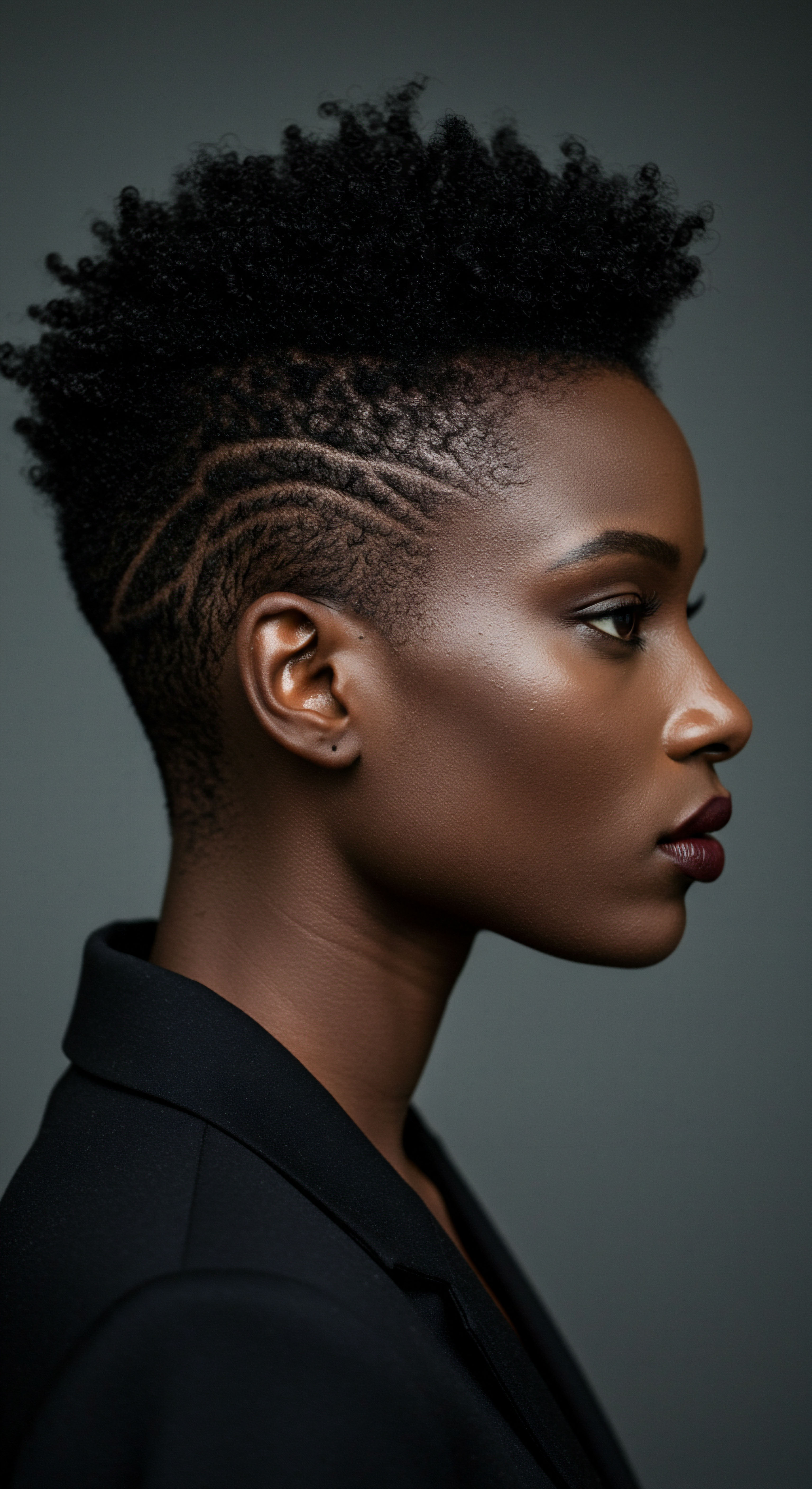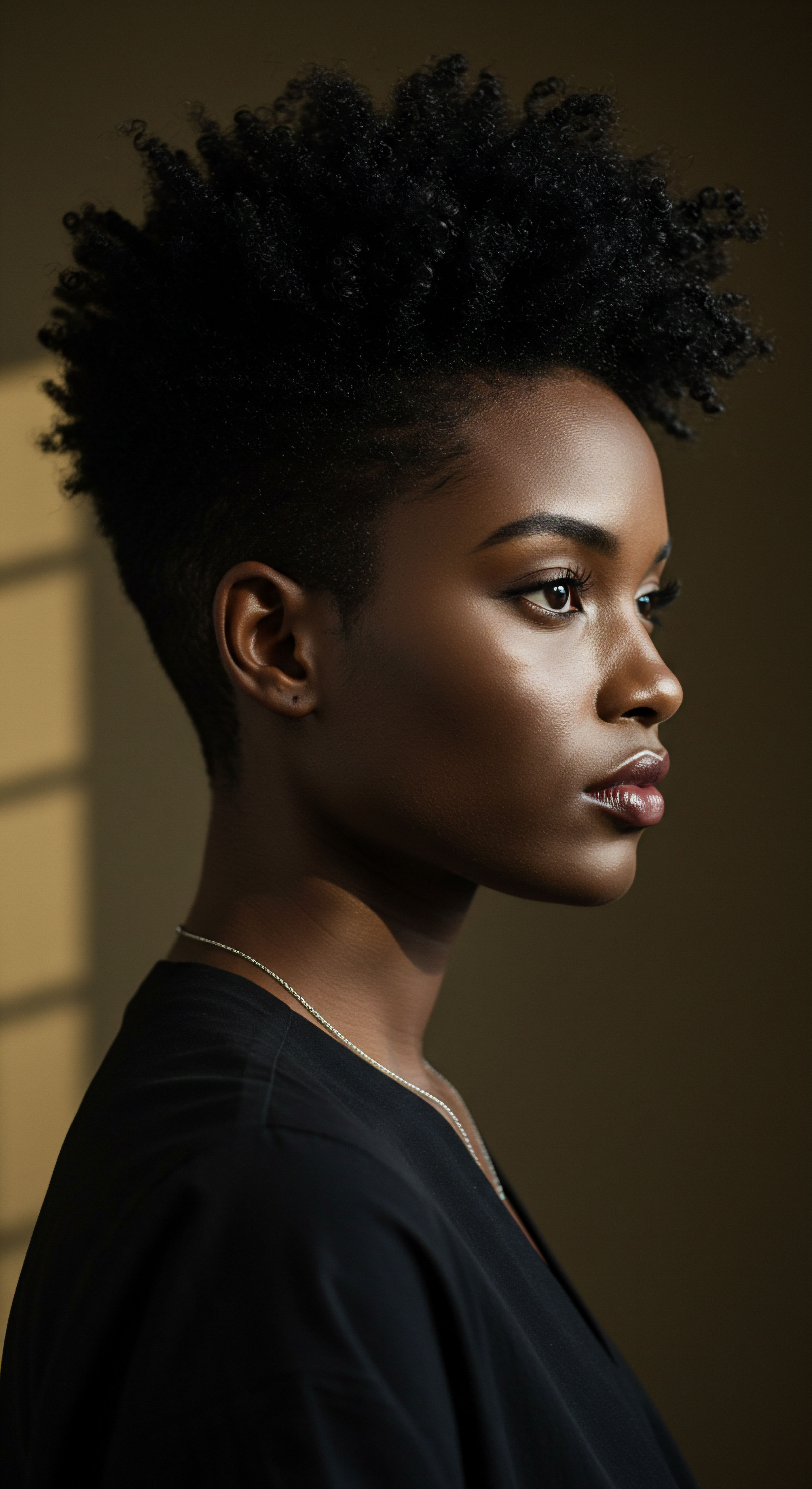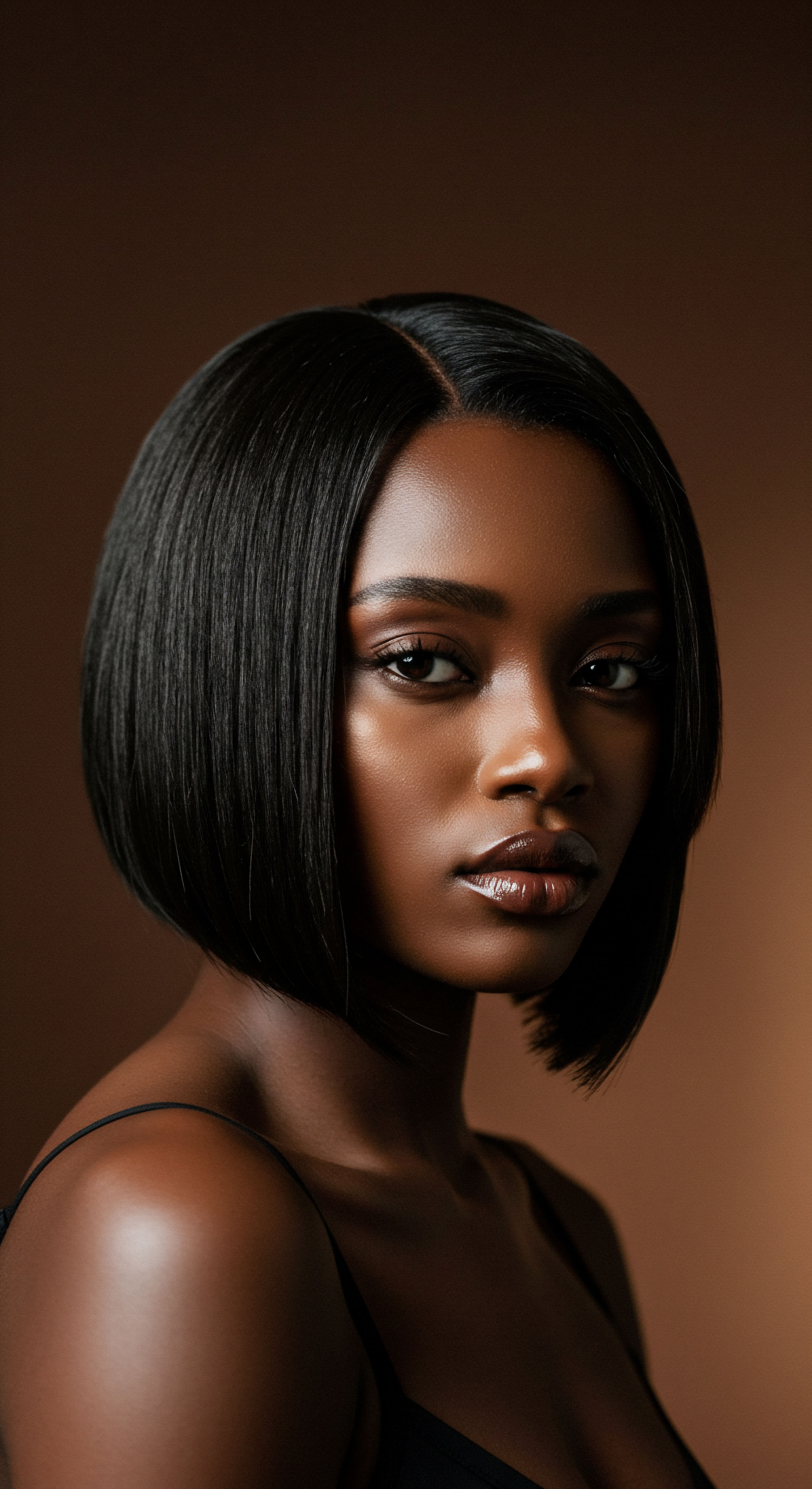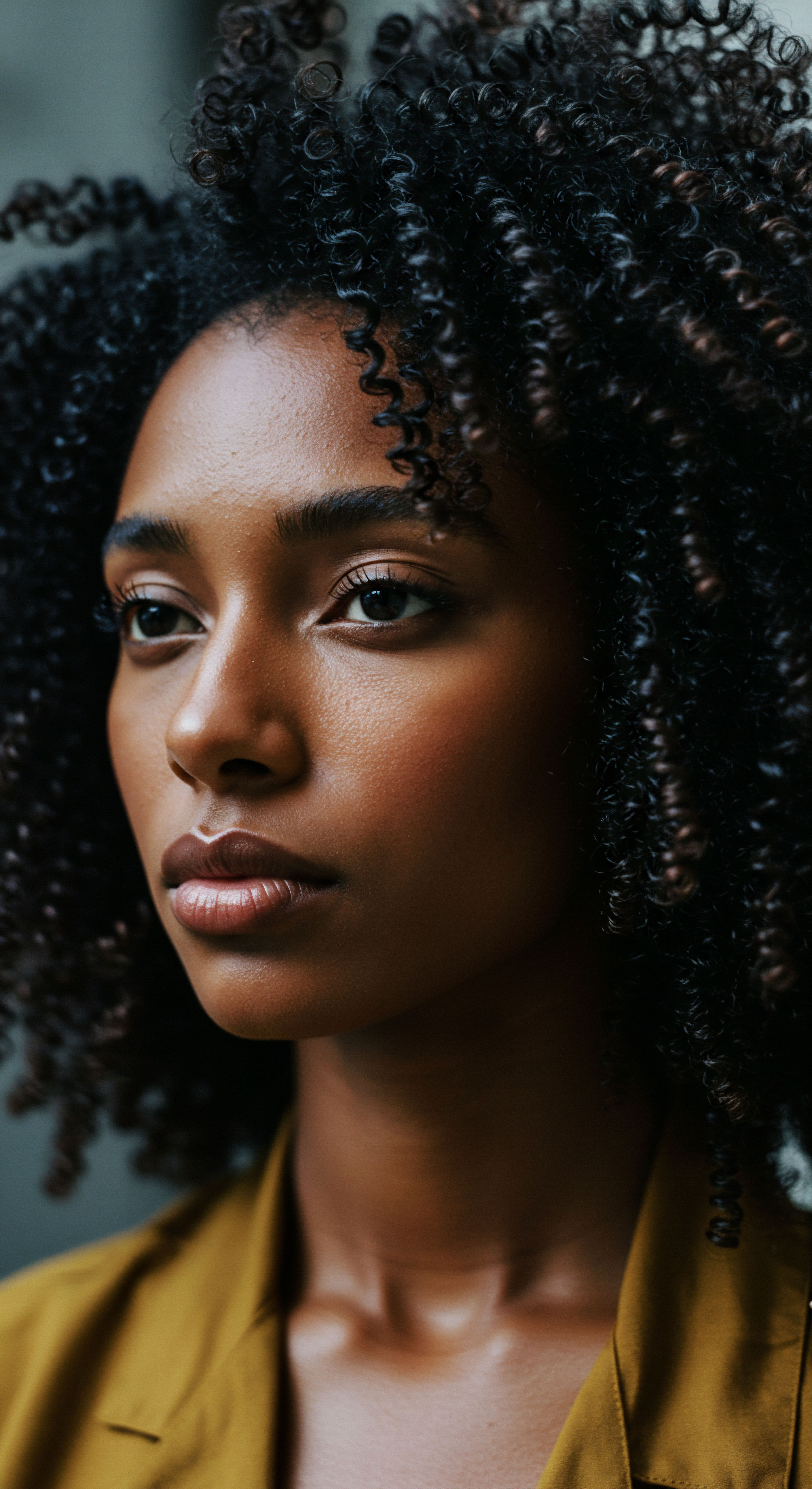
Roots
Consider for a moment the very essence of human experience, stretching back through the mists of time to ancient Kemet, the land we now call Egypt. Even then, beneath the blazing sun and alongside the life-giving Nile, the human scalp, that tender skin cradling our hair, was a site of constant negotiation with the elements. We carry within us a whisper of those ancient days, a shared understanding of what it feels like when the scalp protests, when it cries out for calm.
For the people of ancient Egypt, whose connection to the natural world was profound, this quiet discomfort was not simply endured; it was observed, understood, and met with an ingenuity born of deep attunement to their surroundings. Their approach to soothing an irritated scalp was not a mere superficial act; it was a testament to a foundational knowledge of wellness, a practical wisdom that speaks to us across millennia.
The environment of ancient Egypt presented unique challenges to scalp health. The arid desert climate, with its relentless sun and ever-present dust, could easily lead to dryness and environmental stress. This constant exposure necessitated practices that shielded and nourished the skin of the head.
Furthermore, while ancient Egyptians were renowned for their cleanliness, certain aspects of daily life could still predispose individuals to scalp conditions. The very act of living in close communities, particularly before widespread understanding of microscopic organisms, meant that certain irritants, like lice, were persistent concerns.
Ancient Egyptians, deeply connected to their environment, developed early solutions for scalp irritation, reflecting a foundational understanding of wellness.

Environmental Factors and Scalp Resilience
The Egyptian climate, characterized by its intense heat and dry air, played a significant role in the health of the scalp. Without adequate protection, the skin on the head could become parched, leading to discomfort, flaking, and a feeling of tightness. This environmental pressure likely prompted early experiments with topical applications designed to restore moisture and create a protective barrier. The available resources, primarily botanical in nature, became their pharmacopoeia.
- Sun Exposure ❉ The powerful sun could cause sunburn and dehydration of the scalp, contributing to irritation and discomfort.
- Dust and Sand ❉ Constant airborne particles from the desert environment could accumulate on the scalp, leading to physical abrasion and blockage of follicles.
- Limited Water ❉ Despite the Nile, water conservation was important, and bathing rituals, while thorough, might not have addressed specific scalp needs as comprehensively as modern practices.

Early Insights into Scalp Conditions
The ancient Egyptians were keen observers of the human body and its ailments. Their medical texts, particularly the famed Ebers Papyrus, dating to approximately 1550 BCE, bear witness to their understanding of various skin conditions. These papyri describe maladies that align with what we now identify as rashes and ulcers, and they certainly would have extended to the scalp. The very concept of dermatology, the study of skin, has its roots in these ancient observations.
Archaeological findings and the examination of mummified remains have further illuminated the reality of scalp health in ancient Egypt. Studies of mummies have revealed the presence of conditions like dandruff and lice, indicating that these common human afflictions were indeed present millennia ago. This direct evidence provides a tangible link to the scalp concerns of the past, confirming that the need for relief from irritation is a deeply human, enduring experience. The meticulous preservation of some mummies even shows hair and scalp tissue, offering scientists today a unique window into the biological realities of ancient life.
One study, for instance, identified hundreds of proteins in skin and muscle samples from 4,200-year-old Egyptian mummies. These analyses revealed protein signatures indicative of inflammation and immune response, with some strongly linked to bacterial infection. This remarkable scientific insight suggests that the irritations experienced by ancient Egyptians were not always minor annoyances; they could be manifestations of underlying biological responses, perhaps to infections or environmental stressors, providing a profound connection between their daily discomforts and the very cellular mechanisms of their bodies.

Ritual
Stepping from the foundational knowledge of the scalp into the practical applications of ancient Egyptian care, we discover a world where wellness was woven into daily life. The response to scalp irritation was not a fleeting thought, but a series of thoughtful actions, often infused with purpose. Picture the quiet moments of preparation, the mixing of botanical extracts, the gentle application of salves.
These were not simply medical procedures; they were acts of care, a testament to the Egyptians’ profound connection to their bodies and the earth’s bounty. This section explores the specific remedies and practices they employed, guiding us through the sensory landscape of their haircare.
The ancient Egyptians relied heavily on natural resources to address various bodily complaints, including those affecting the scalp. Their environment, rich in diverse flora, provided a veritable pharmacy of soothing and healing ingredients. The emphasis was on topical applications, often in the form of oils, balms, and pastes, which could deliver their beneficial properties directly to the affected area.

Botanical Balms and Soothing Salves
Among the most prominent ingredients in ancient Egyptian scalp care were a variety of oils. Castor Oil, a staple in their beauty and wellness routines, was valued for its moisturizing and strengthening properties. It was applied to the hair and scalp, not only to nourish but also to promote healthy growth. The Egyptians understood its richness, even roasting the beans to extract an oil believed to be more potent due to increased sulfur content, a mineral vital for hair protein.
Other significant oils included Almond Oil and Moringa Oil, both prized for their hydrating qualities. Moringa, often called the “miracle oil,” was cherished for its lightweight texture and antioxidant presence, believed to nourish the scalp and maintain overall hair vitality. These oils were not just for superficial gloss; they were deep conditioners, intended to penetrate and soothe the skin beneath the hair.
Beyond oils, the Egyptians turned to a range of plants for their medicinal properties. Aloe Vera, known as the “plant of immortality,” was a consistent presence in their remedies, celebrated for its soothing, hydrating, and anti-inflammatory attributes. Its gel, rich in vitamins and antioxidants, was applied directly to the skin and scalp to calm irritation and support healing.
Ancient Egyptians employed a variety of natural oils and plant extracts, such as castor oil and aloe vera, to hydrate and calm irritated scalps.
Henna, primarily recognized as a dye, also offered therapeutic benefits for the scalp. Its natural conditioning properties could strengthen hair, and it was believed to possess cooling qualities that could soothe the scalp and reduce dandruff. The Sycamore Tree, a prominent feature of the Egyptian landscape, also yielded extracts used to treat various dermatoses, suggesting its role in addressing skin and scalp discomfort.

How Were Scalp Remedies Applied?
The application of these remedies was often a deliberate, ritualistic act. Oils were massaged into the scalp, a practice that not only distributed the product but also stimulated blood flow, promoting circulation and supporting follicle health. While modern hot oil treatments utilize steam incubators, the ancient Egyptians likely achieved a similar effect through warming the oils or applying them in the warm climate.
For more persistent issues like lice, a common annoyance, the Egyptians practiced frequent head shaving, often wearing wigs as a protective and aesthetic measure. This pragmatic approach to hygiene underscores their commitment to preventing irritation, even if it meant temporary removal of natural hair.
A variety of ingredients, sometimes combined in complex formulations, were applied as pastes or poultices. The Ebers Papyrus mentions recipes for head ailments, including mixtures of flour, incense, and various plant extracts. The specific ratios and methods of preparation for these ancient prescriptions reveal a systematic, albeit empirical, approach to medicine.
| Ingredient Castor Oil |
| Primary Benefit Hydration, strengthening, growth support |
| Modern Analogue/Use Hair growth serums, deep conditioners |
| Ingredient Aloe Vera |
| Primary Benefit Soothing, anti-inflammatory, healing |
| Modern Analogue/Use After-sun gels, sensitive skin products |
| Ingredient Honey |
| Primary Benefit Antimicrobial, humectant, wound healing |
| Modern Analogue/Use Moisturizing masks, natural dandruff treatments |
| Ingredient Henna |
| Primary Benefit Conditioning, cooling, dandruff reduction |
| Modern Analogue/Use Natural hair dyes, scalp masks |
| Ingredient Moringa Oil |
| Primary Benefit Antioxidant, nourishing, lightweight hydration |
| Modern Analogue/Use Hair oils for fine textures, scalp serums |
| Ingredient These natural ingredients formed the basis of ancient Egyptian scalp wellness. |

What Was the Role of Hygiene in Scalp Care?
Personal hygiene held paramount importance in ancient Egyptian society, transcending social class. Daily bathing was a norm, and while specific shampoos as we know them were absent, cleansing agents were employed. Lemon juice mixed with water, for instance, was used as a cleanser, particularly for its ability to cut through sebaceous oil. This proactive approach to cleanliness would certainly have played a role in preventing scalp irritation by removing dirt, sweat, and excess oils that could otherwise lead to discomfort.
The cultural emphasis on cleanliness was not merely for aesthetics; it was deeply intertwined with health and religious purity. Priests, in particular, maintained strict hygiene standards, often shaving all body hair to avoid lice and maintain ritual purity. This societal norm contributed to an environment where scalp health was actively considered and managed, reducing the incidence of conditions that could lead to irritation.

Relay
To truly understand how ancient Egyptians addressed scalp irritation, we must move beyond the superficial application of remedies and consider the deeper layers of their medical philosophy, cultural beliefs, and the subtle interplay of their environment and daily lives. This section invites us into a more sophisticated understanding, where the empirical meets the symbolic, and where the human body was viewed as a system requiring balance. We will draw connections between their ancient wisdom and modern scientific insights, illuminating the enduring relevance of their practices.
The medical texts of ancient Egypt, such as the Ebers Papyrus and the Edwin Smith Papyrus, are not simply lists of ingredients; they represent a sophisticated, if sometimes mystifying, system of observation, diagnosis, and treatment. These documents reveal a pragmatic approach to medicine, where conditions were categorized and specific remedies prescribed. While some prescriptions included elements we might deem magical, a substantial portion focused on botanical and mineral compounds with verifiable therapeutic properties. This duality speaks to a worldview where physical ailments could have both natural and supernatural origins, yet practical solutions were always sought.

How Did Ancient Egyptian Medical Philosophy Shape Scalp Treatments?
A central tenet of ancient Egyptian medicine was the “channel theory,” which posited that the body contained a network of vessels, or “Metu,” through which bodily fluids flowed. Unimpeded flow was considered a fundamental prerequisite for health. While this theory differs significantly from modern circulatory or nervous system understanding, it provided a conceptual framework for understanding illness, including skin and scalp conditions.
An irritated scalp, from this perspective, might have been attributed to a blockage or imbalance within these channels, prompting treatments aimed at restoring proper flow. This early physiological model, however rudimentary, guided their therapeutic choices.
Their diagnostic methods, though lacking modern tools, were remarkably systematic for their time. Physicians would take a medical history, perform manual examinations, and assess clinical signs. This methodical approach allowed them to identify and differentiate various skin maladies, suggesting that specific types of scalp irritation were recognized and distinguished from one another, rather than being treated as a generic discomfort.
Ancient Egyptian medicine, guided by the ‘channel theory’ and systematic observation, sought balance in the body to address ailments, including scalp irritation.

Unveiling the Scientific Basis of Ancient Remedies
Many of the natural ingredients used by ancient Egyptians for scalp care possess properties now confirmed by modern science. The inclusion of Honey in numerous remedies, for example, is particularly telling. Honey is a natural humectant, meaning it draws and retains moisture, which would have been crucial for a dry scalp in a desert climate. Beyond hydration, honey exhibits significant antimicrobial and antifungal properties.
This explains its efficacy in treating conditions like seborrheic dermatitis and dandruff, as documented in some modern studies. The Egyptians, without understanding microbiology, observed its healing effects and incorporated it widely.
Consider also the use of Tar. While it sounds harsh, ancient Egyptians used tar to treat rashes, and presumably conditions like eczema and psoriasis. Intriguingly, tar is still a component in some modern shampoos designed to treat dandruff and is combined with topical steroids for psoriasis. This continuity of use across millennia, from ancient Egyptian papyri to contemporary dermatological products, speaks volumes about the inherent effectiveness of certain natural compounds, even if the underlying mechanisms were initially unknown.
Another fascinating, though perhaps controversial, aspect is the mention of animal fats in remedies for hair loss and scalp conditions. The Ebers Papyrus, for instance, lists mixtures containing fats from hippopotamus, crocodile, and snake. While these sound bizarre to a modern ear, animal fats contain various lipids, fatty acids, and sometimes vitamins, which could have provided emollient and protective benefits to dry or damaged skin. The symbolic association of these animals with vitality might also have played a role in their inclusion, underscoring the blend of empirical observation and cultural belief.

Beyond the Common ❉ A Glimpse into Paleodermatology
The study of ancient diseases through mummified remains, known as paleopathology, offers a unique window into the actual health challenges faced by ancient Egyptians. This field provides tangible evidence, moving beyond textual descriptions. For instance, a study of an Egyptian mummy dating from 892 BCE reportedly showed subcorneal vesicles in inguinal skin, leading to a tentative diagnosis of Subcorneal Pustular Dermatosis. If correct, this would mean the condition existed three millennia before its modern description.
This particular finding, though specific to body skin, suggests that a range of inflammatory skin conditions, potentially affecting the scalp, were present in the ancient population. The very possibility of identifying such specific dermatological conditions in remains thousands of years old underscores the remarkable preservation capabilities of mummification and the dedication of modern paleopathologists.
This ability to identify specific dermatological conditions in mummified remains, often through the analysis of preserved proteins, offers a compelling bridge between ancient practices and contemporary understanding. It allows us to appreciate that their attempts at healing were responses to genuine, identifiable biological phenomena, providing a profound scientific validation of their historical struggles and successes with skin health.
| Condition/Observation Dandruff |
| Evidence Type Direct observation on mummified hair/scalp |
| Significance for Scalp Irritation Confirms a common irritant was present. |
| Condition/Observation Lice |
| Evidence Type Lice and nits found on mummified hair |
| Significance for Scalp Irritation Indicates parasitic irritation was a prevalent issue. |
| Condition/Observation Eczema/Rashes |
| Evidence Type Historical texts (Ebers Papyrus) and modern interpretation of remedies (tar) |
| Significance for Scalp Irritation Suggests inflammatory skin conditions were recognized and treated. |
| Condition/Observation Inflammation/Immune Response |
| Evidence Type Protein analysis of mummified skin tissue |
| Significance for Scalp Irritation Provides biological evidence of the body's reaction to irritants or infections. |
| Condition/Observation Subcorneal Pustular Dermatosis |
| Evidence Type Histological findings in mummified skin |
| Significance for Scalp Irritation Indicates specific inflammatory skin conditions existed, potentially on the scalp. |
| Condition/Observation Mummy studies confirm the ancient presence of various skin and scalp irritations. |
The meticulous attention to personal grooming and the widespread use of wigs in ancient Egypt also speak to their practical approach to scalp health. Wigs not only offered a statement of social standing but also served a crucial hygienic purpose, protecting the shaved scalp from the harsh sun and helping to manage lice infestations. This dual functionality highlights a culture that seamlessly blended aesthetic aspirations with practical health considerations.
The knowledge of ancient Egyptians, preserved in papyri and in the very remains of their bodies, offers a rich perspective on how communities grappled with basic human discomforts like scalp irritation. Their remedies, though often steeped in tradition and empirical observation, laid foundational groundwork for dermatological understanding, proving that even without microscopes or modern chemistry, a deep connection to nature could yield effective solutions for the health of the skin and hair.

Reflection
As we step back from the sun-drenched landscapes of ancient Egypt and return to our present moment, a quiet wisdom lingers. The practices of those long-ago people, their gentle applications of oils, their careful cleansing rituals, and their insightful observations of the body’s responses, remind us that the quest for scalp wellness is a timeless pursuit. There is a profound continuity in the human experience of seeking comfort and balance for our bodies, a delicate thread connecting their world to ours. Perhaps the most compelling lesson from Kemet is not just about the specific ingredients they used, but about the spirit of mindful care they embodied—a reminder that sometimes, the simplest, most grounded approaches can hold the deepest truths for our textured hair, and for our entire being.

References
- Mukhopadhyay, P. (2016). Back to the roots – Dermatology in ancient Egyptian medicine. ResearchGate.
- Medical News Today. (2018). Ancient Egyptian medicine ❉ Influences, practice, magic, and religion.
- Kandil, H. A. & Salama, M. E. A. (2018). Role of the hair in ancient Egypt. International Journal of Tourism and Hospitality Management, 1(1), 77-84.
- Curationist. Hair and Makeup in Ancient Egypt.
- Arab News. (2012). The secret of ancient Egyptian beauty.
- Dermatology, H. (2016). History of dermatology ❉ the study of skin diseases over the centuries.
- Egyptra Travel Services. (2025). From Ancient Egypt to Modern Beauty ❉ Timeless Cosmetic Secrets.
- Timeless Skincare & Haircare Tips. (2024). Ancient Egyptian Beauty Secrets That Still Work Today.
- The Afro Curly Hair Coach. (2023). CHECK OUT THESE TRADITIONAL HAIRCARE TREATMENTS.
- History.com. (2012). 9 Bizarre Baldness Cures.
- Live Science. (2016). Skin Proteins from Mummies Reveal How Ancient Egyptians Died.
- Etre Vous. (2024). Here’s why hair oiling is the ancient ritual worth adopting.
- Rthvi. (2024). Exploring Ancient Hair Care Rituals ❉ Timeless Practices for Modern Hair Wellness.
- Wikipedia. Egyptian medical papyri.
- I LOVE A DOG. The Pharaohs’ prescriptions – Frankincense & Myrrh.
- The #safetyinbeauty. (2023). Ancient Egyptian Beauty Tips – Harnessing the power of botanicals.
- TheCollector. (2022). Ancient Egypt’s Most Indulgent Beauty Secrets.
- Absolut Viajes. Hygiene in Ancient Egypt.
- Auckland Museum. (2023). What did the ancient Egyptians ever do for us?
- Reddit. (2017). What was the hygiene and self-grooming habits of Ancient Egyptians like?
- Journal of the Egyptian Society of Dermatology and Venereology. (2015). The history of dermatology, venereology and dermatopathology in different countries – Egypt.
- PhilArchive. Ancient Egyptian Medicine ❉ A Systematic Review.
- Wikipedia. Ebers Papyrus.
- Shea Terra. 100% Pure Egyptian Black Castor Oil.
- PubMed. (1987). The Egyptian sycamore tree ❉ its use in dermatology.
- Dermatology Times. (2016). Lessons from the past.
- PAGEPress Publications. Diseases and therapies in Ancient Egypt ❉ what mummies and other human remains tell us?
- Bragan Skincare. Natural Remedies for Itchy Scalp ❉ Restore Comfort and Health.
- Phthiraptera.info. THE OSTRACON.
- Humerus Revelations of the Naked Ape. (2018). Hair Raising Facts About Ancient Egyptian Hairstyles.
- PMC. Traditional and Modern Uses of Natural Honey in Human Diseases ❉ A Review.
- BBC. (2011). Health Hazards and Cures in Ancient Egypt.